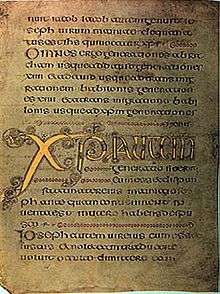Salt and light

Salt and light are images used by Jesus in the Sermon on the Mount, one of the main teachings of Jesus on morality and discipleship.[1] These images in Matthew 5:13, 14, 15 and 16 immediately follow the Beatitudes and are often interpreted as referring to Jesus' expectations of his disciples.[2]
The general theme of Matthew 5:13–16 is promises and expectations, and these expectations follow the promises of the first part.[2]
The first verse of this passage introduces the phrase "salt of the earth":
You are the salt of the earth. But if the salt loses its saltiness, how can it be made salty again? It is no longer good for anything, except to be thrown out and trampled underfoot.
The later verses refer to not hiding a lamp under a bushel, which also occurs in Luke 8:16–18 and the phrase "Light of the World", which also appears in John 8:12.
You are the light of the world. A town built on a hill cannot be hidden. Neither do people light a lamp and put it under a bowl. Instead they put it on its stand, and it gives light to everyone in the house. In the same way, let your light shine before others, that they may see your good deeds and glorify your Father in heaven.